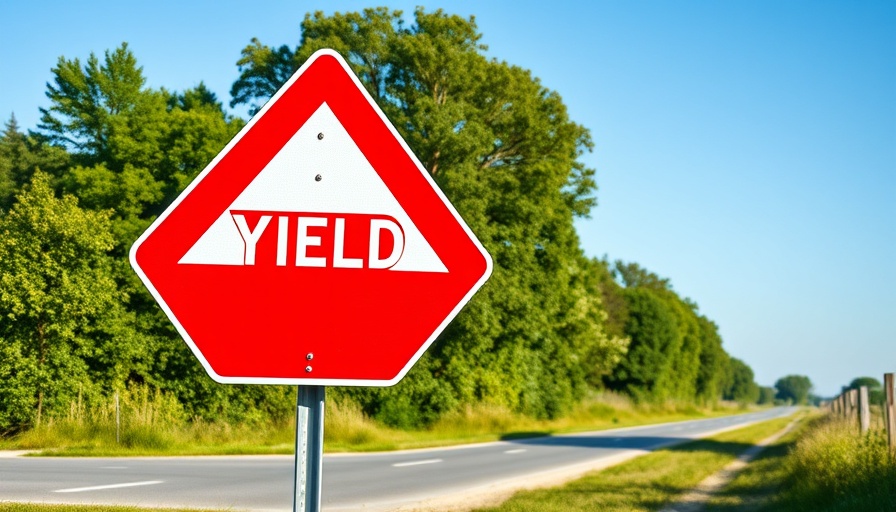
Understanding the Risks: Safest and Most Dangerous Cities to Drive In
As we navigate the roads of the United States, safety remains a primary concern for drivers, especially in bustling urban areas. The 2025 report from Allstate sheds light on the safest and riskiest cities for motorists, providing insights that can significantly influence driving decisions, vehicle insurance rates, and even future relocations. With cities like Brownsville, TX, topping the list as the safest, while cities like Boston, MA, and Los Angeles, CA, rank among the riskiest, what does this mean for the average Californian driver?
Why Driving Safety Matters
Driving statistics are essential not merely for understanding where we can drive safely but also for evaluating the broader implications of road safety on community well-being. For Californian homeowners and potential buyers, understanding which cities rank high or low in driving safety could affect insurance premiums and the quality of life within a community. As the busiest state when it comes to vehicular traffic, safety statistics resonate deeply with those living in metropolitan areas like Los Angeles, San Francisco, and San Diego.
Insights from the Allstate Report
According to the Allstate report, the safest cities for drivers in 2025 include:
- Brownsville, TX
- Boise, ID
- Fort Collins, CO
- Cary, NC
- Laredo, TX
- Olathe, KS
- Scottsdale, AZ
- Port St. Lucie, FL
- Madison, WI
- Eugene, OR
These cities reported the fewest auto insurance claims, suggesting that they are less likely to see accidents. Though this indicates a generally safer environment, the data is not exhaustive. It doesn’t include unreported incidents, nor does it account for the sheer number of drivers in these cities, which could skew the perception of safety.
The Most Dangerous Cities: What to Watch Out For
Conversely, the riskiest cities list may not come as a surprise for frequent travelers. The top ten riskiest cities include:
- Boston, MA
- Washington, DC
- Baltimore, MD
- Worcester, MA
- Springfield, MA
- Glendale, CA
- Los Angeles, CA
- Oakland, CA
- Providence, RI
- Philadelphia, PA
The presence of congestion and high traffic rates contributes significantly to these cities being labeled as high-risk. For drivers, especially in California’s densely populated areas, it’s crucial to adopt defensive driving techniques and remain alert to changeable traffic patterns.
Connecting the Dots: Implications for California Drivers
As Californians, understanding these safety rankings can empower drivers to make informed decisions. Homeowners might choose to consider proximity to safer regions when looking for a new residence. Furthermore, knowing that riskiest cities are often hubs of traffic can encourage residents to plan travel during less busy times, reducing the risk of accidents and potentially lowering insurance costs.
Future Driving Trends and Safety Resources
Predictions suggest that improving road infrastructures and rising safety technologies (like driver assistance features) may contribute to a decline in accident rates over the next few years. Moreover, cities are incorporating smart traffic management systems aimed at improving flow and reducing congestion.
Those looking to drive safely should also be proactive about education. Resources such as local driving classes or even dedicated apps can equip drivers with crucial defensive strategies that save lives. Consider utilizing technology to stay informed about real-time traffic conditions which indirectly can contribute to safer driving practices.
Your Role as a Responsible Driver
Ultimately, while statistical data from the Allstate report provides crucial information, individual responsibility on the road is paramount. Drivers must remain vigilant, avoid distractions, and insist upon maintaining their vehicles to foster safety for themselves and others.
Final Thoughts: Stay Informed, Drive Safely
In a rapidly urbanizing world, understanding where it's safest to drive can greatly impact insurance decisions, personal safety, and even community relations. Every Californian driver has a stake in making our roads safer. Regularly consult updated reports and remain informed about your driving environment. It’s not only beneficial for you but becomes part of a larger culture of safety that anyone can contribute to.
 Add Row
Add Row  Add
Add 




Write A Comment